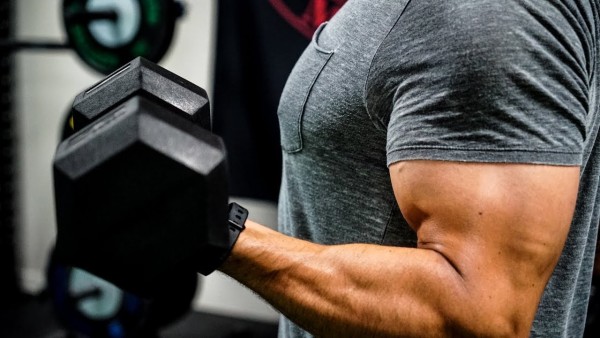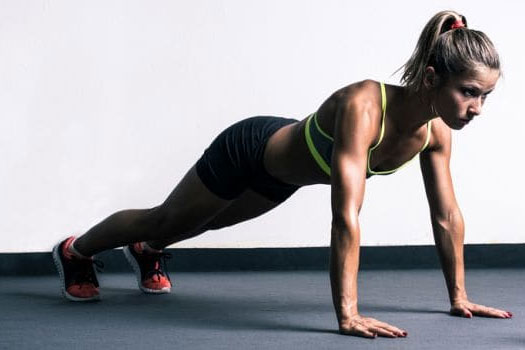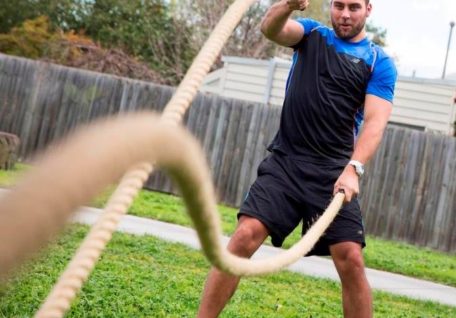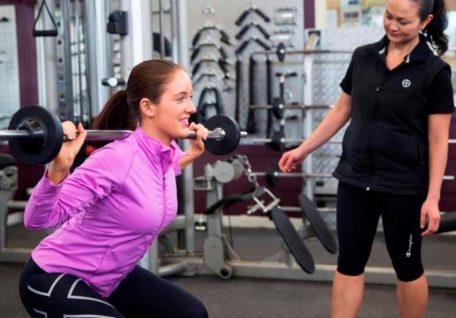If you’re looking to add some variety and change up your typical rep range to challenge your muscles, look no further than twenty-ones. While typically synonymous with bodybuilding and bicep curls, the twenty-ones programming method can be successfully applied to exercises for the chest, shoulders, triceps, back and legs to take your workout to the next level.
 How Does it Work?
How Does it Work?
Just as all exercises have a range of motion (ROM), or road map to follow, the 21s repetitions can be broken down into three parts: the bottom half of the contraction, or the lower ROM; the top half of the contraction, or the upper ROM; and the entire contraction of each muscle, or the full ROM of the exercise.
Here’s how each set is broken down, with each ROM getting 7 reps, adding up to a total of 21:
- Lower Range of Motion
Bottom half of the exercise – 7 reps per set
- Upper Range of Motion
Top half of the exercise – 7 reps per set
- Full Range of Motion
Full range of the exercise – 7 reps per set
Benefits:
Increased endurance – with many single-joint exercises usually performed in the 8-15 rep range, 21s will require longer muscular endurance and will challenge your muscular stamina and tolerance.
Exercise efficiency – the longer sets and unique ROMs performed won’t allow for as many exercises to be performed per body part. The quick pump felt means one or two exercises per muscle group can be eliminated.
Burn more calories – by increasing the time that the muscle remains under tension and the duration of the set, more calories will be burned.
Muscle confusion – by attacking repetitions from multiple starting and ending points, the atypical execution pattern will keep the body guessing and kick-start your progress again if you have reached a plateau.
Exercises:
Skull Crushes
Lower ROM – slowly lower the dumbbells until they’re just alongside your head. Pause, then extend your arms until they reach 45 degrees and repeat
Upper ROM – slowly lower the dumbbells, stopping when your arms form a 45-degree angle. Pause, then extend your arms until they’re straight once again and the dumbbells are directly above your shoulders
Full ROM – lower the dumbbells until they’re alongside your head. Pause, then extend your arms until they’re directly above your shoulders.
Barbell Bicep Curl
Lower ROM – from the starting position, curl the bar upward until your arms form a 90-degree angle. Pause, then slowly lower the bar back to your thighs, controlling the movement on the way down.
Upper ROM – curl the bar up to your chest, squeezing your biceps for a second at the top. Lower the bar to a 90-degree angle and repeat.
Full ROM – curl the bar up to your chest, squeezing your biceps for a second at the top, then lower the bar to the fully extended starting position.
Bulgarian Split Squats
Lower ROM – lower your hips into a front lunge position by bending your right knee and dropping your left knee straight to the ground. Drive up through your right heel until about half-way up. Lower and repeat.
Upper ROM – from the top position, perform movement by bending your right knee and lower until about half-way between starting position and the ground. Drive up through the heel to return to top and repeat.
Full ROM – bracing your core and keeping your chest up, lower until your front thigh is almost horizontal, keeping your knee in line with your foot. Once at the bottom, drive up and return to starting position.
Push Up
Lower ROM – keeping your body in a straight line, lower your chest to the floor and come up to half of your full ROM. Lower and repeat
Upper ROM – from the top position lower your body halfway to the floor and then return to the top position
Full ROM – engaging your entire body, lower yourself to the floor and press all the way back up for a full push up
Additional Information:
How much weight to use?
- Start with a weight that would be your 15RM and adjust from there, or
- 40% of your 10RM
How many sets?
- Perform between 1-3, with 90 seconds to 3 minutes rest between each set of 21
Can this method be used for everyone?
- This technique should be used by those who are familiar with technique and are more advanced in their training knowledge and skill level
- I.e. not for beginners
If you would like to learn more about different programming progressions and want to get qualified in a field you are passionate about, check out our Cert III & IV in Fitness and become a Personal Trainer!

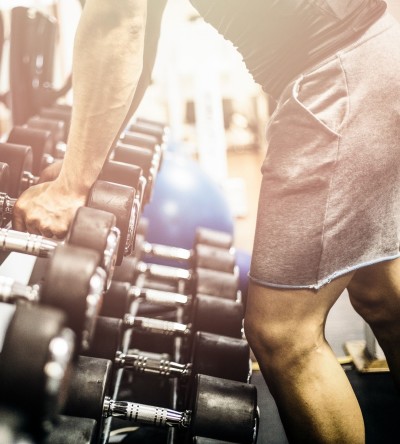 How Does it Work?
How Does it Work?